Ultimate Guide to Roof Replacement Costs in 2024 | Everything You Need to Know
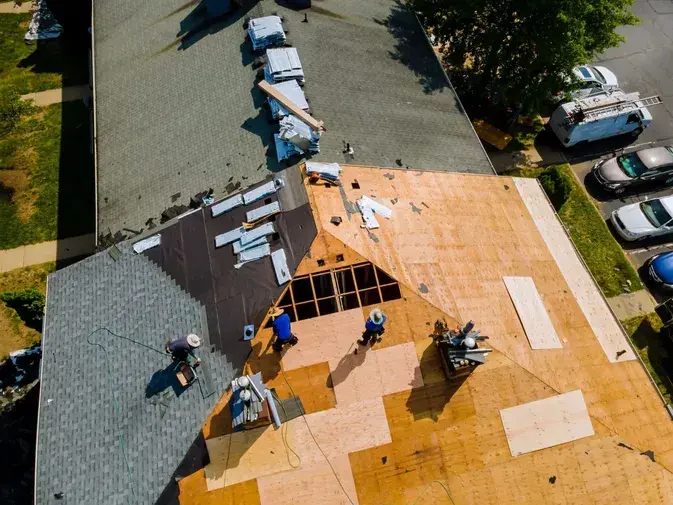
Are you planning to renovate your home by raising the roof but are not sure about the costs involved? If you are preparing to start a roof raising project, it’s essential to understand the financial implications to make a sound investment decision. As we enter 2024, I’m here to provide insights into the factors that impact roofing expenses and break down the approximate costs involved. From labor costs to permit expenses, let’s take a deep dive into the factors affecting the cost of raising a roof.
Key Takeaways
- The size and complexity of your roof significantly influence the overall cost, including labor, materials, and waste disposal.
- Material selection impacts both the upfront cost and long-term investment due to differences in durability and maintenance needs.
- Geographical location affects roofing costs due to variations in labor rates, weather conditions, and local building regulations.
- Additional materials and accessories, such as underlayment and ventilation systems, can add unexpected costs to your roofing project.
- A quality warranty can protect your investment by ensuring coverage for repairs or replacement due to material or workmanship issues.
Factors Influencing Roof Replacement Costs
Several factors affect how much does a roof replacement cost, including the shape of your roof, the slope of your roof, and the roofing material you choose. The current state of your roof can also significantly impact the overall cost. It’s crucial to consider these replacement cost factors to know about roof replacement costs fully.
Material Selection
The type of roof you choose is a pivotal factor in determining the new roof cost. Roof material options vary widely, each with its own price range and benefits. Here’s a quick rundown of common roof types and their associated material cost:
- Asphalt Shingles: A go-to choice for many homeowners due to their cost-effectiveness.
- Metal Roofing: Offers durability and a longer lifespan, often at a higher price point.
- Tile Roof: Provides a classic aesthetic with excellent longevity but can be more expensive.
- Wood Shakes: Deliver a natural look but require more maintenance and can be costly.
- Synthetic Roofing Options: Include materials like rubber and plastic polymer, balancing cost with performance.
The cost of roof replacement can fluctuate based on the roof material selected. For instance, a tile roof may increase the average roof replacement cost due to its weight and installation complexity. Conversely, choosing asphalt shingles might keep the cost of a roof replacement closer to the average roof expense. It’s essential to weigh the initial roof replacement costs against long-term value and maintenance requirements. Ultimately, the cost of a roof replacement will reflect the balance between durability, aesthetics, and your budget.
Roof Size and Design Complexity
The size of your roof is a primary factor in determining the cost of replacement. Larger roofs require more materials and time to complete, leading to higher expenses. Additionally, the complexity of your roof’s design can significantly impact the final bill. Complex designs may include features such as multiple levels, chimneys, and skylights, each adding to the cost due to the extra labor and materials needed.
- Roof size: A larger roof surface means more shingles and underlayment, as well as increased labor.
- Design complexity: More intricate designs necessitate careful planning and execution, which can extend the project’s duration and cost.
Understanding these aspects is crucial when budgeting for your roofing project. It’s essential to assess the square footage and design intricacies of your roof to get a more accurate estimate of the potential costs involved.
Labor and Installation Charges
Labor and installation are significant roof replacement cost factors. Skilled labor is in high demand, and the cost reflects the expertise required for a durable and safe installation. Here’s what to consider:
- Hourly rates of workers vary by region and skill level.
- Project complexity can increase labor time, impacting costs.
- Overhead expenses such as tools, vehicles, and gas contribute to the total charge.
Remember, efficient project management can mitigate labor expenses. Always factor in potential overtime for expedited projects. When budgeting, include both direct wages and indirect costs to get a realistic estimate of the labor involved in your roofing project.
Geographical Location Impact
The region where you live can significantly influence the cost of roofing. Areas with a higher cost of living typically see increased prices for roofing services. This is due to several factors:
- The general market rates for labor and materials are higher.
- Local regulations may require specific materials or construction practices that drive up costs.
- Transportation and supply chain issues can affect material availability and prices.
Another key factor that may have a geographic impact on roofing costs is the cost of living in your area. Roofing contractors must factor in all the costs associated with doing business, including wages, insurance, and operational expenses, which are all influenced by the local economy. It also matters whether it is residential roofing or commercial roofing.
Current Roof Condition
The cost to replace a roof can be significantly influenced by the condition of the old roof. A well-maintained roof may only require minor repairs or updates, while a neglected one could necessitate a complete overhaul. Here are some factors to consider:
- Structural Integrity: Issues like sagging or damaged rafters can compromise the structural integrity of your roof and require immediate attention.
- Energy Inefficiency: An aging roof may lead to increased energy costs due to decreased efficiency.
- Leaks and Water Damage: Signs such as interior water stains or mold growth indicate potential leaks that need urgent repair.
- Granule Loss: For asphalt shingles, loss of protective granules is a sign of wear that can affect the roof’s longevity.
Addressing these issues promptly can reduce the overall cost to replace a roof by preventing more extensive damage over time.
Types of Roofing Materials and Their Costs
The cost of a new roof varies widely depending on the roofing material. Options range from asphalt shingles to metal, each with different costs by material. Your choice will affect the average cost to replace a roof, with some materials offering longer life spans but higher initial costs.
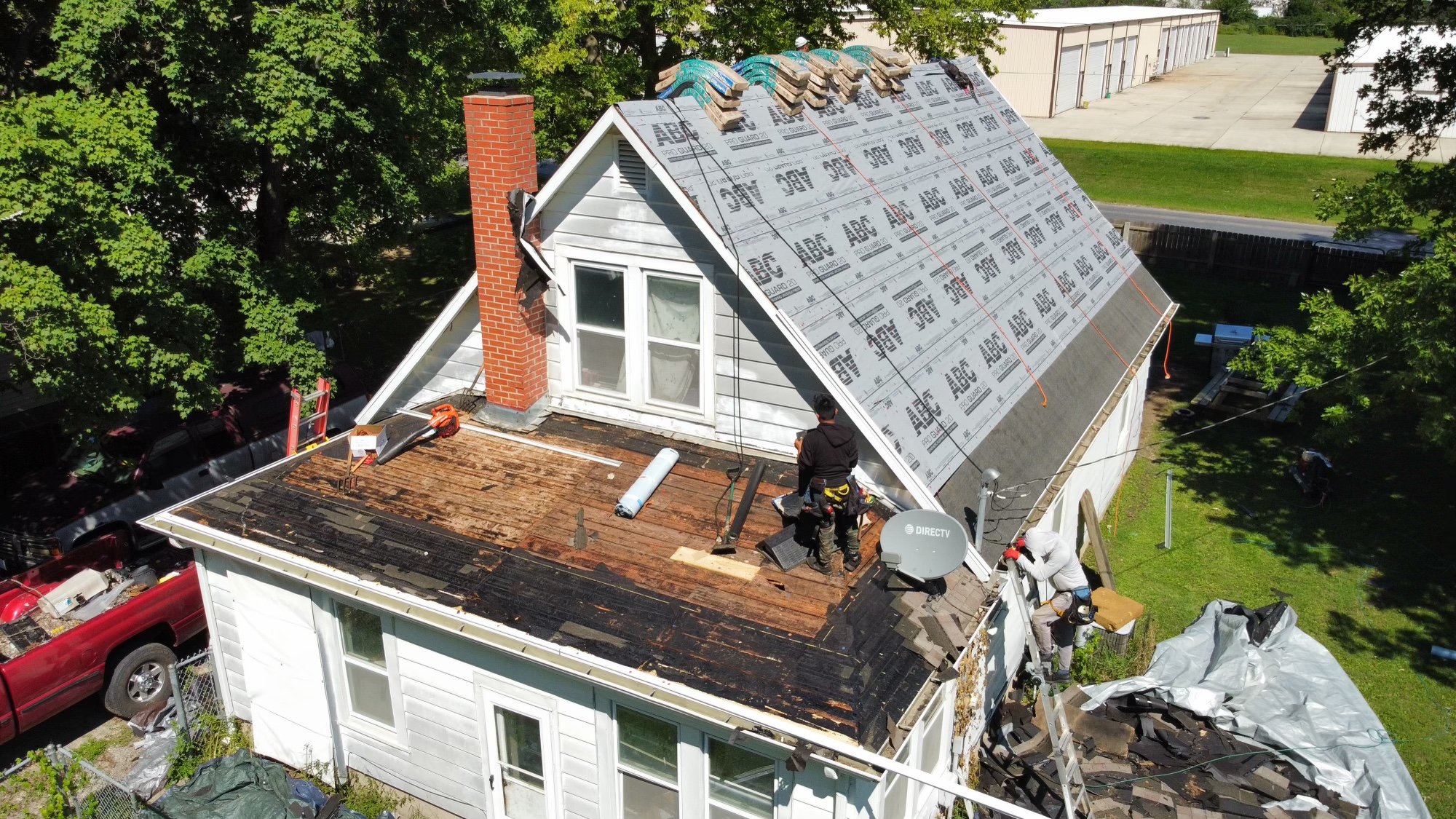
Asphalt Shingles
Asphalt shingles are a popular choice for homeowners due to their cost-effectiveness and ease of installation. The average cost for an asphalt shingle roof can vary, typically influenced by the quality and type of shingles used.
When considering how much does it cost to install an asphalt shingle roof, prices can range significantly. Basic 3-tab shingles are the most affordable, while architectural shingles, known for their durability and aesthetic appeal, may increase the project’s cost. Here’s what to expect:
- Basic 3-tab shingles: These are economical and commonly used, with prices that typically cost less upfront.
- Architectural shingles: They offer enhanced durability and a more sophisticated look but come at a higher price point.
It’s important to factor in the long-term value, as cheaper shingles may require more frequent replacements. Always consult with professional roofing contractors for accurate estimates tailored to your specific needs.
Metal Roofing
Metal roofing stands out for its durability and energy efficiency. A metal roof can significantly reduce monthly energy costs by reflecting heat away from the home. With a variety of styles like standing seam, corrugated, and metal shingles, homeowners can find the perfect match for their architectural preferences.
Costs for metal roofing vary, but it’s a long-term investment in your home’s protection and aesthetic appeal. For instance, corrugated metal is a cost-effective and versatile option, while standing seam metal offers a reliable and robust solution with a modern look. Stone-coated metal roofs combine the durability of steel with the traditional aesthetics of other materials.
When considering a metal roof, it’s important to factor in the initial installation cost against the long-term savings and increased home value. According to Forbes, the average installation cost for a metal roof on a 1,700-square-foot roof was $13,200 in 2024.
Tile and Slate
Tile and slate stand out for their aesthetic appeal and longevity. These materials are known for their durability and can significantly enhance the curb appeal of any home. However, they come with higher initial costs compared to other roofing options.
- Slate roof installations are particularly notable for their cost. For a slate roof, expenses can be substantial, often starting around $350 per square foot. This includes the cost of materials and the complexity of installation.
- Tile roofs offer a variety of styles and colors, providing flexibility in design. While less expensive than slate, tile roofing still represents a considerable investment.
Choosing between tile and slate involves balancing budget considerations with the desired outcome for your home’s appearance and value.
Wood Shakes
Wood shakes offer a distinctive natural look that can significantly enhance the aesthetic of a home. They are known for their durability and insulation properties, providing a layer of protection against the elements. When considering wood shakes, it’s important to factor in both the initial investment and the long-term maintenance costs.
- Wood shakes are typically more expensive than standard asphalt shingles.
- The cost of a cedar shake roof, including tear-off and installation, ranges from $25.00 to $30.00 per square foot.
- Regular maintenance is required to prevent moss, rot, and other damage.
Choosing wood shakes means investing in a roofing solution that combines beauty with resilience. However, the higher upfront cost and maintenance requirements should be carefully weighed against your budget and willingness to commit to ongoing upkeep.
Synthetic Roofing Options
Synthetic roofing materials offer a modern alternative to traditional roofing, combining durability with aesthetic versatility. These materials, such as rubber (EPDM) and plastic polymer, are engineered to withstand harsh weather conditions while providing a range of color options that mimic natural materials.
Homeowners often weigh synthetic roofing against other materials like metal roofing when considering longevity and cost-effectiveness. The choice often hinges on personal preference and the specific design of the home. For those prioritizing a unique look without sacrificing performance, synthetic options like DaVinci Roofscapes and Euroshield provide compelling solutions.
When exploring synthetic roofing, consider the following:
- The desired appearance and how well it complements your home’s design.
- The material’s resistance to environmental factors such as UV rays and extreme temperatures.
- The long-term value, factoring in maintenance and potential energy savings.
Understanding Roofing Labor Expenses
Labor costs can be a significant part of your roof replacement. The complexity of your roof, including its slope and the need for a professional roof inspection, can influence these costs. Roofing companies typically calculate labor as a percentage of the overall expense, so more complex projects will increase the cost.
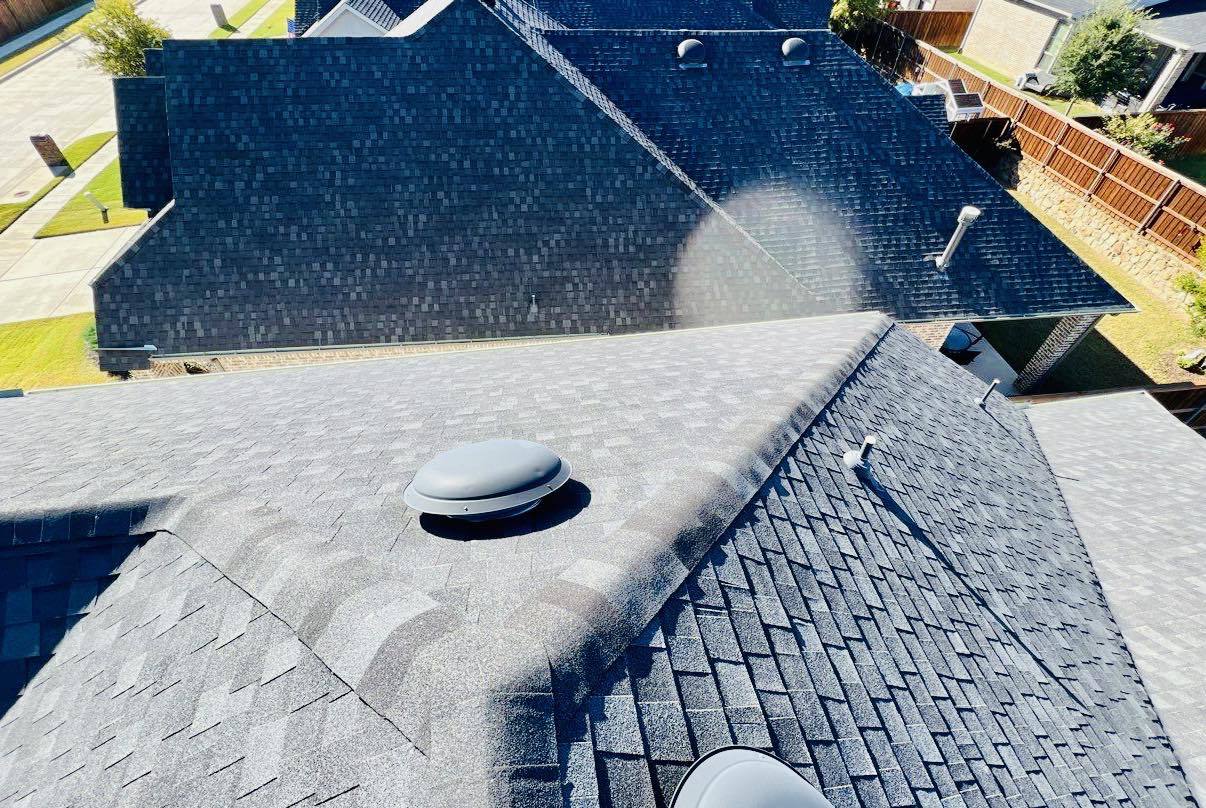
Cost Factors for Labor
Labor cost is a pivotal factor in the overall expense of roofing. Per square foot, costs can vary widely, influenced by several cost factors. Here’s a brief cost guide:
- The complexity of the roof design can increase labor hours and costs.
- Skilled labor shortages may drive up wages, impacting the bottom line.
- Overhead expenses, such as equipment and transportation, are factored into labor rates.
Efficient project management can mitigate some labor costs, but it’s essential to budget for the unexpected. Always consider the potential for overtime pay if the project requires a quick turnaround.
Hiring Qualified Contractors
Selecting the right contractor is crucial for a successful roof replacement. Evaluate their reputation, experience, and past work quality to ensure they can deliver the results you expect. Look beyond the bids; consider their reliability and how well they communicate. These factors are essential for the project’s success.
When negotiating contracts, clarity is key. Ensure that expectations, timelines, and costs are explicitly outlined to prevent any misunderstandings. Different contractors may offer varying rates based on their specialties and experience, so balance affordability with quality to protect your investment.
Remember to:
- Evaluate reputation and experience
- Assess communication skills
- Negotiate clear contracts
Timeframe and Scheduling Impact
The duration of a roofing project can significantly affect labor expenses. Shorter timelines may increase labor costs due to the need for additional workers or overtime hours. Conversely, extended projects can also accrue higher costs from prolonged labor engagement. Planning is crucial to balance the timeframe and budget effectively.
- Plan thoroughly with a realistic timeline and contingencies.
- Communicate effectively with all parties to align and stay informed.
- Monitor progress and address issues promptly.
- Ensure timely client decisions on design choices to prevent bottlenecks.
Remember, most residential jobs take about 7-14 days, but complex projects may extend over several weeks or months. This does not account for pre-construction planning or permit acquisition time. To avoid delays and manage costs, consider the following:
- Evaluate contractor reputation and experience.
- Negotiate clear contracts outlining expectations and costs.
- Use construction estimating software for budgeting and monitoring.
Warranty and Workmanship Guarantees
A robust warranty can be the deciding factor in your roofing investment. Ensure your warranty covers both materials and workmanship to safeguard against future expenses. Warranties vary, with some protecting against installation errors for a set period. Always read the fine print to understand the extent of coverage.
- Verify the duration of the warranty
- Check for coverage of materials and installation
- Understand the claims process
Selecting a contractor who offers a solid workmanship guarantee adds another layer of protection. This guarantee is a commitment to address any installation-related issues, providing peace of mind. Remember, the best value may not always come from the lowest bid but from a balance of cost and quality assurance.
The Hidden Costs of Roofing
Beyond the obvious expenses, hidden costs can include the need for a permit to replace your roof, unexpected repairs discovered during the process, and disposal fees for the old roofing material. These factors can increase the average roof replacement cost unpredictably.
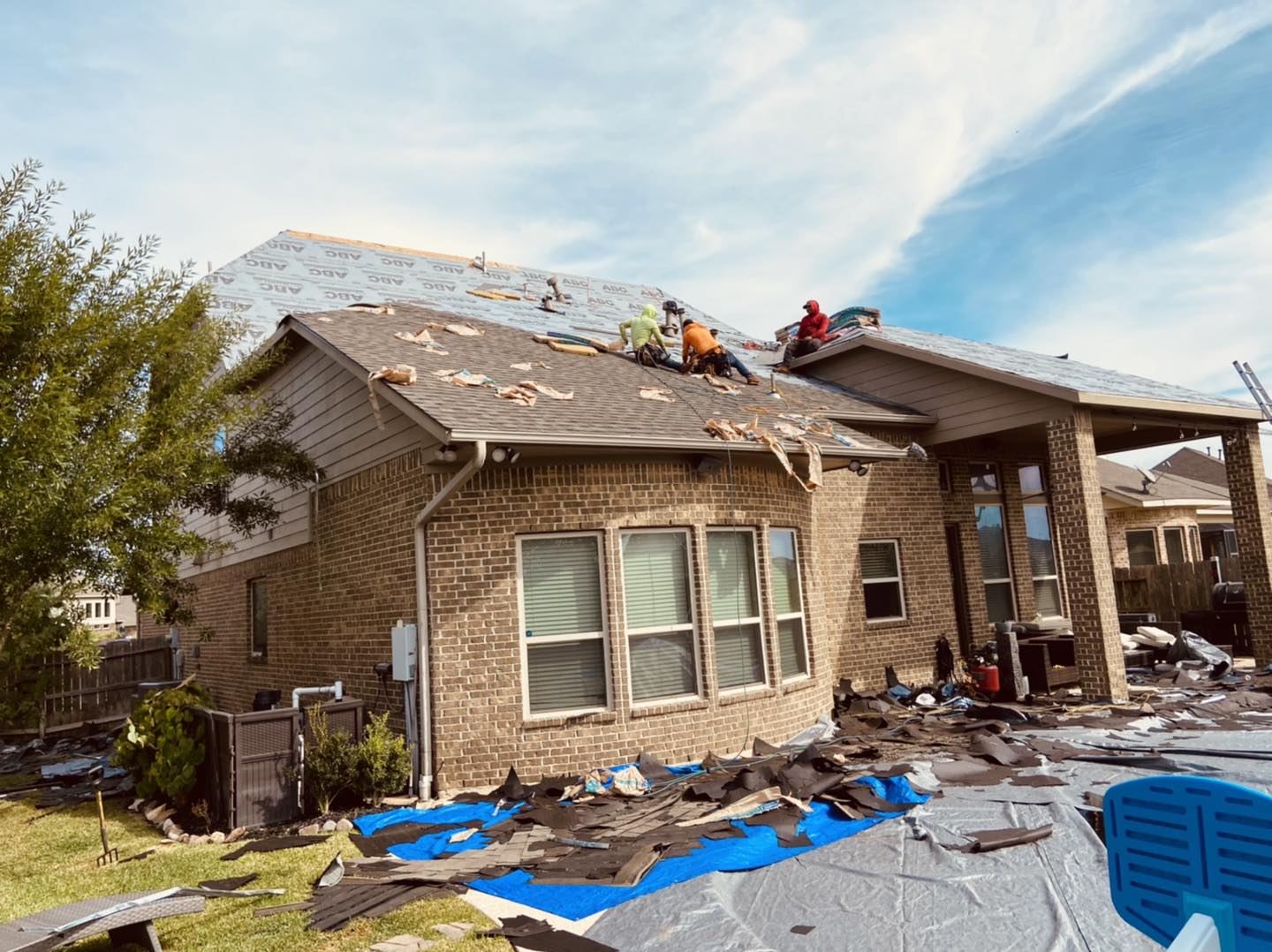
Permits and Inspections
Securing the necessary permits is a crucial step in the roofing process. Local regulations often require a building permit for roofing projects to ensure compliance with safety standards. The cost of these permits can vary widely, from as low as $50 for minor work to over $1,500 for more extensive projects.
A thorough roof inspection is also essential before beginning any work. It identifies potential issues that could affect the new roof’s installation and longevity. Inspections are typically conducted by licensed professionals and may be mandated by local building codes.
Here are key points to consider:
- Check with your local building department for specific permit requirements.
- Factor in the cost of permits when budgeting for your roofing project.
- Schedule a professional roof inspection to avoid future complications.
Additional Materials and Accessories
Beyond the primary roofing materials, a roof replacement often involves additional roof components that can impact your budget. These include underlayment, which acts as a secondary barrier against water, and flashing, which seals and protects joints. Ventilation systems are also crucial to maintain airflow and prevent moisture buildup.
- Underlayment: A necessary layer for water protection.
- Flashing: Seals roof joints against leaks.
- Ventilation: Essential for air circulation and moisture control.
Investing in these additional materials and accessories ensures a comprehensive roofing solution, safeguarding your home against future issues. While they may increase initial costs, they are vital for the longevity and performance of your roof.
Waste Removal and Disposal
Roof replacement generates waste, from old shingles to packaging materials. Proper disposal is crucial to avoid environmental harm and additional costs. Here are key considerations:
- Assess the volume of waste to determine the size and number of dumpsters needed.
- Choose a disposal method that complies with local regulations to prevent fines.
- Consider recycling options, such as for metal roofing or asphalt shingles, to reduce landfill impact.
Hiring a professional waste removal service can streamline the process. They handle transportation and disposal, ensuring compliance with waste management laws. Remember, the cost of waste removal is often not included in initial roofing estimates, so allocate funds accordingly.
Unexpected Repairs and Adjustments
When undertaking a roofing project, it’s crucial to anticipate the possibility of unexpected repairs and adjustments. These can arise due to unforeseen issues such as hidden water damage or structural weaknesses that become apparent only once the work begins. To manage these potential extra costs effectively:
- Ensure clear contract clauses are in place for handling changes in project scope or unexpected costs.
- Establish communication protocols for discussing budget adjustments with the client.
- Implement approval mechanisms for any additional expenditures to ensure transparency and mutual agreement.
Roof repair costs can vary widely, with some minor fixes being relatively inexpensive, while more extensive damage can lead to significant expenses. Strategic planning and clear communication can help mitigate the impact of these unforeseen expenses on your overall budget.
Financing Your Roofing Project
Options for financing your roof project can help cover the cost of a new roof. These might include home equity loans, roofing company financing, or personal loans. Exploring these options can provide a pathway to manage the cost of your roof replacement effectively.

Budget Considerations
When planning for a new roof, budget considerations are crucial. Set aside 10-20% of the total project cost for contingencies, as this can cover unexpected expenses or changes in project scope. It’s essential to understand how features like roof pitch can influence the overall cost. A steeper pitch often requires more materials and labor, impacting your budget.
To avoid cost overruns:
- Meticulously plan each project phase.
- Choose materials strategically to balance quality and affordability.
- Ensure clear communication protocols are in place for budget adjustments.
Educate yourself on the cost implications of different roofing materials and designs. Prioritize your needs and make informed decisions to stay within your financial limits. Transparency with your contractor about budget expectations can help build trust and ensure a smooth roofing project.
Exploring Financing Options
When considering how to finance your new roof, it’s important to assess all available roof options. Homeowners should compare interest rates and terms to find the most cost-effective solution. Aligning your choice with your financial goals, such as building equity or minimizing interest expenses, is crucial.
Selecting the right lender is key. Look for favorable terms and conditions that match your financial situation. Once chosen, follow the lender’s instructions to complete the financing process, which may include signing agreements and providing additional documentation.
In 2024, homeowners have a variety of roof financing options. These range from cash payments, which avoid interest but may require significant savings, to home equity lines of credit (HELOC) with lower interest rates and potential tax benefits. Remember, the roof may represent a significant investment, so it’s essential to make an informed decision that aligns with your long-term goals.
Interest Rates and Loan Terms
Securing the right financing for your roofing project involves understanding the nuances of interest rates and loan terms. Interest rates can significantly affect the total cost of your loan. Fixed rates offer stability, while variable rates may fluctuate, impacting your monthly payments.
- Fixed vs. Variable: Choose between predictable payments or the potential for lower rates over time.
- Comparative Analysis: Shop around to find competitive interest rates and save money in the long run.
Loan terms dictate the repayment period, influencing how much you pay each month. Shorter terms mean higher monthly payments but less interest over time, whereas longer terms spread out the cost but accumulate more interest.
- Repayment Period: Consider how the loan’s duration aligns with your financial plans.
- Early Payment: Investigate the possibility of extra payments or penalties for early loan payoff.
Remember to factor in any additional fees, such as application or origination fees, which can add to the overall expense. Always align your financing choice with your financial goals, whether that’s building equity or minimizing interest expenses.
Investment Value of a Quality Roof
Investing in a quality roof is not just about immediate shelter; it’s a strategic choice for long-term home value. A roof is one of the most significant components of a home, influencing both its safety and aesthetic appeal. Here are key points to consider:
- A durable roof can enhance the overall value of your property.
- Quality roofing materials and proper installation reduce the need for frequent repairs, saving money over time.
- A well-chosen roof can improve energy efficiency, leading to lower utility bills.
When evaluating roofing options, consider the longevity and performance of the materials. The right investment upfront can lead to substantial savings and increased home value in the future. Remember, a roof is one aspect of your home that you shouldn’t compromise on, as it protects everything underneath it.
Choosing the Right Shingles for Your Roof
When it’s time to replace your roof, choosing the right shingles is crucial. Consider durability, cost, and aesthetic when selecting. The average cost of roof replacement can vary based on the type of shingles you choose, impacting the overall investment in your home.

Architectural vs. 3-Tab Shingles
When it comes to shingles, homeowners are often faced with choosing between 3-tab and architectural styles. 3-tab shingles are known for their affordability and traditional flat appearance. They consist of three tabs and provide a uniform look, but generally have a shorter lifespan.
In contrast, architectural shingles are thicker, more durable, and offer a textured look that can enhance your home’s aesthetic. Although they come at a higher initial cost, their longevity and resistance to damage often translate to a better investment over time.
Key considerations when selecting shingles include:
- Budget constraints
- Desired aesthetic outcome
- Local climate conditions
Ultimately, the choice between the two shingle types should balance cost, appearance, and performance to ensure your home remains protected and visually appealing for years to come.
Durability and Lifespan
The longevity of your roof is a crucial factor to consider. Metal roofs stand out for their exceptional lifespan, often lasting 50 years or more with proper maintenance. This durability not only provides peace of mind but also translates into long-term savings.
Asphalt shingles, while more affordable upfront, offer a shorter lifespan of 20 to 30 years. However, choosing high-quality architectural shingles can enhance both durability and aesthetics, potentially extending their life expectancy.
When selecting roofing materials, consider these points:
- Metal roofs are highly durable and can last up to 70 years.
- Asphalt shingles have a respectable lifespan but are outperformed by metal options.
- The strength of metal roofs is frequently backed by extensive warranties, some lasting a lifetime.
Ultimately, the right choice depends on budget, climate, and personal preference. Remember, investing in a durable roofing material can increase your home’s value and reduce the need for frequent replacements.
Aesthetic Appeal
The visual impact of a shingle roof cannot be overstated. It’s the first thing people notice when they look at a home. Here are a few points to consider:
- Architectural shingles offer a textured, dimensional look that can mimic the appearance of traditional materials.
- The color and style of shingles can complement the architectural design of a home, enhancing its character.
- A well-chosen shingle roof can significantly boost a property’s curb appeal, potentially increasing its market value.
When selecting roofing materials, it’s essential to consider how the shingles will integrate with the home’s overall aesthetic. A harmonious design can leave a lasting impression on visitors and passersby alike.
Cost-Benefit Analysis
When evaluating the cost-effectiveness of roofing materials, consider both initial outlay and long-term value. Asphalt shingles, for instance, offer affordability upfront but may require more frequent replacement. Conversely, premium materials like slate may entail higher initial costs but last longer, potentially offering better value over time.
- Assess the lifespan of each material against its cost.
- Factor in maintenance requirements and potential energy savings.
- Consider the impact on your home’s resale value.
A thorough cost-benefit analysis balances these elements, ensuring you make an informed decision that aligns with both your budget and your home’s needs. Remember, the cheapest option isn’t always the most cost-effective in the long run.
The Importance of a Good Warranty
A good warranty can cover the cost of any future issues, providing peace of mind and potentially saving money on roof repair costs down the line. When comparing roofing companies, inquire about the warranty offered for their work and the materials.
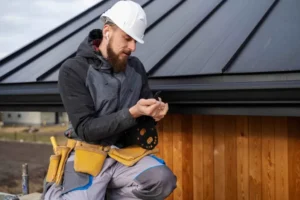
Manufacturer’s Warranty
A roof warranty is a promise from the manufacturer to stand behind their product. It’s your financial protection against defects in materials or workmanship. When selecting a warranty, consider the following:
- The scope of coverage and any exclusions
- The warranty’s duration and whether it’s prorated over time
- Maintenance requirements to keep the warranty valid
- The manufacturer’s reputation and business longevity
Remember, a warranty’s value is tied to the company’s stability; a long warranty means little if the company isn’t around to honor it. Metal roofing often boasts longer warranties, reflecting its durability, while synthetic roofing warranties may vary widely. Always read the fine print to understand your coverage fully.
Extended Warranty Options
Extended warranties offer additional peace of mind beyond the standard manufacturer’s coverage. They can protect against unforeseen costs that may arise from defects or issues not covered by the original warranty. When considering extended warranty options, keep in mind:
- The length of the extended warranty compared to the expected lifespan of the roof.
- What specific elements are covered, such as labor, materials, or both.
- The reputation and reliability of the company offering the warranty.
Always read the fine print to understand the terms and conditions. It’s crucial to know the process for filing a claim and any associated costs. An extended warranty may be a wise investment, especially if it offers transferability, which can increase your home’s resale value.
Understanding Warranty Coverage
A roof warranty is a critical component of your roofing investment, offering peace of mind and financial protection. It’s essential to understand the specifics of what your warranty covers and for how long. Here are key points to consider:
- Scope of Coverage: Determine whether the warranty includes materials, labor, or both. Some warranties may cover the full cost of materials and labor if installation is done by an authorized contractor.
- Duration: Roof warranties vary in length. Check the number of years your warranty remains in effect and what conditions may void it.
- Transferability: If you plan to sell your home, a transferable warranty can be an attractive feature for potential buyers.
Remember, a warranty is only as good as the manufacturer and contractor behind it. Always choose reputable parties and ensure proper installation to avoid future disputes.
Warranty as an Investment Protection
A robust warranty can safeguard your investment by ensuring that any defects or premature failures are addressed without additional costs. Consider a warranty as a safety net for your roofing project, protecting both your finances and your home’s integrity in the long run.
- Scope of protection: It’s crucial to understand what is covered, such as fixing leaks, and what is not, like complete roof replacement.
- Maintenance conditions: Be aware of any maintenance requirements that must be met to keep the warranty valid.
- Prorated vs. non-prorated: Determine whether the warranty benefits decrease over time or remain consistent.
Remember, the value of a warranty is tied to the longevity and reliability of the issuing company. Opt for manufacturers with a solid reputation and a history of business stability to ensure your warranty holds its promise.
Preparing for Roof Replacement
Preparing for a complete roof replacement involves understanding the estimated costs of a roof, the time it will take to replace the roof, and any logistical considerations, such as the need to stay elsewhere during the project. A professional roof inspection can offer a clearer picture of the need for a new roof and help you budget accordingly.
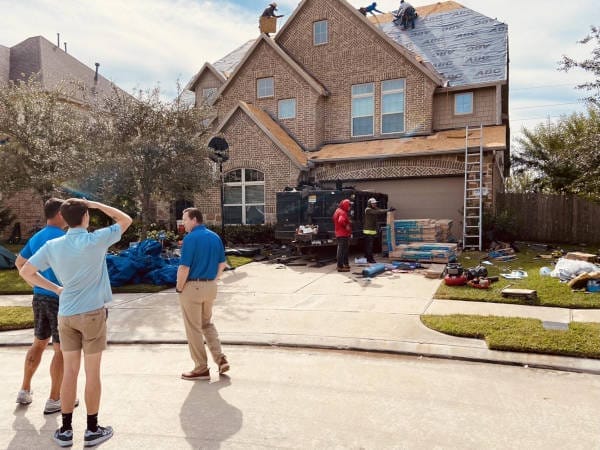
Assessing the Need for Replacement
Determining whether to repair or replace your existing roof is a critical decision. Start by inspecting the interior for signs of water infiltration, as these may indicate the need to replace your roof. Consider the age of your roof; if it’s nearing or beyond 20 to 30 years, a full roof replacement might be necessary. Look for missing, cracked, or curling shingles, which suggest a compromised roof.
When deciding between a partial roof replacement or a complete overhaul, assess the extent of damage. If issues are localized, partial replacement could suffice. However, if problems are widespread, replacing the entire roof ensures long-term integrity. DIY roof replacement can be cost-effective but weigh the risks and your skill level carefully. For substantial projects, hiring professionals is advisable.
Before committing to a roof replacement, evaluate the condition of your entire roof. A thorough assessment helps avoid unexpected costs and ensures a durable, high-quality roof. Remember, a full roof replacement is a significant investment in your home’s future.
Project Scope and Timeline
Defining the project scope and timeline is a critical step in any home improvement project. Start by outlining the specific tasks that need to be completed, from removing the old roofing material to installing the new shingles. Next, establish a realistic timeline for each phase of the project, considering factors such as weather conditions and material delivery schedules.
To ensure a smooth process:
- Develop a detailed project plan that includes all tasks and milestones.
- Communicate with your contractor to align expectations and deadlines.
- Allow for flexibility in the schedule to accommodate unforeseen delays.
Remember, a well-defined scope and a clear timeline are the backbones of a successful roofing project. They help manage both the contractor’s and the homeowner’s expectations, leading to a more efficient and satisfactory outcome.
Selecting a Roofing Contractor
Choosing the right roofing contractor is crucial for a successful new roof installation. Here are some steps to help you select a professional roof installer:
- Verify that the contractor is licensed and insured to protect against any liabilities.
- Look for a local roofing contractor with a solid reputation in your community.
- Ask for references and review past work to assess their expertise in roof installation.
- Ensure they provide a detailed estimate and contract before agreeing to install a new roof.
Selecting a local roofing expert not only supports your community but also ensures easier communication and follow-up. Remember, a professional roof installation is an investment in your home’s safety and value. Take the time to choose wisely for your new roof.
Planning for Disruptions During Construction
Roof replacement can be a disruptive process. Prepare your home and family for the construction phase to minimize the impact. Start by inspecting your property for existing damage and document the state of your home. This will help you identify any changes caused by the construction work.
To avoid delays and manage disruptions:
- Plan thoroughly, including a realistic timeline and contingency plans for known risks.
- Communicate effectively with all parties involved, ensuring everyone is aligned and informed.
- Monitor progress closely and address any issues promptly to prevent them from escalating.
- Ensure timely decision-making on design choices to prevent bottlenecks.
Remember to account for unexpected costs by setting aside a financial cushion. This will help you handle unforeseen expenses and maintain your project’s momentum without financial hiccups. By preparing for these aspects, you can ensure a smoother roof replacement experience.
Conclusion
As we wrap up our comprehensive exploration of roofing costs, it’s clear that a multitude of factors come into play when budgeting for a roof renovation or replacement. From the size and complexity of your roof to the quality of materials and the necessity for additional accessories, each element contributes to the final expense.
Understanding these variables is crucial in making an informed decision that aligns with your budget and home improvement goals. Whether you’re facing emergency repairs or planning a long-term investment, being well-informed will help you navigate the financial aspects of roofing with confidence.
Remember to consider financing options and the value that a durable, high-quality roof adds to your property. With careful planning and consideration of the insights provided, homeowners can tackle roofing projects with a clear picture of the costs involved.
